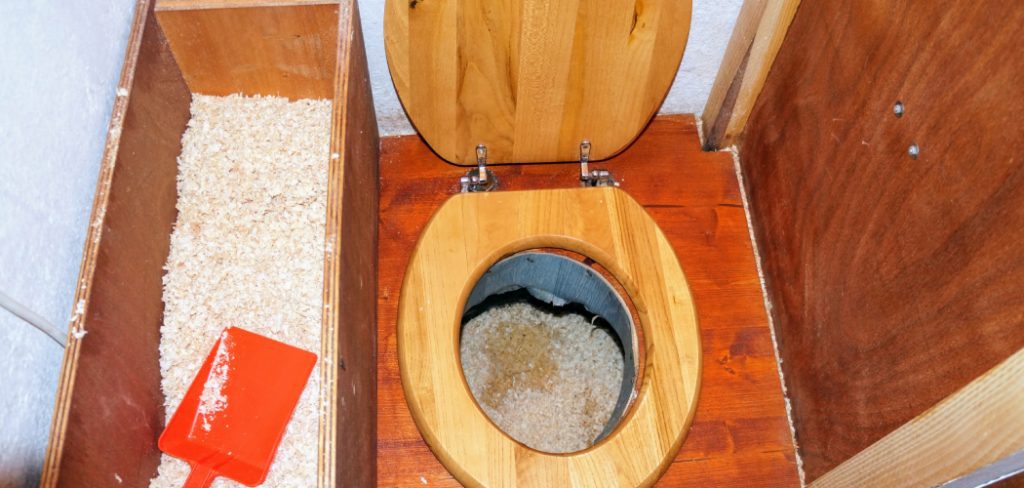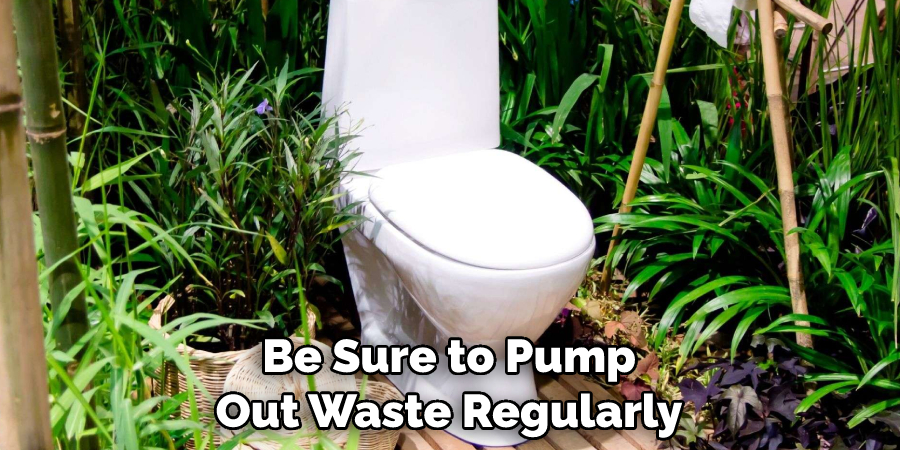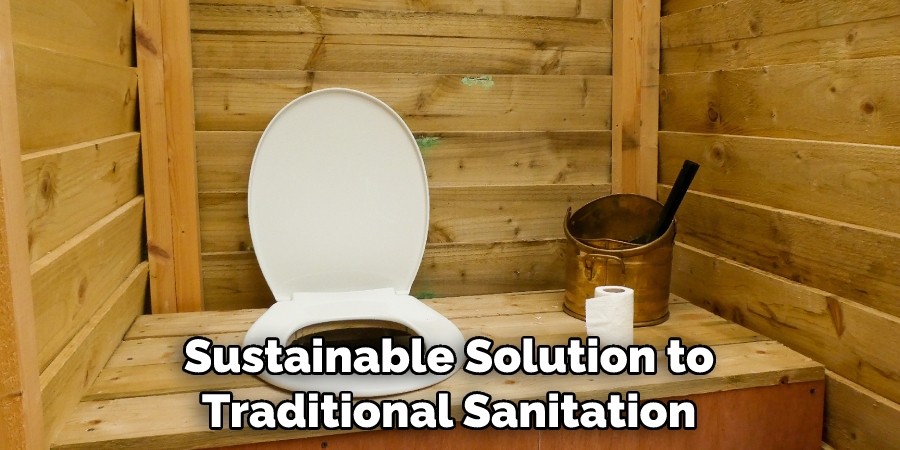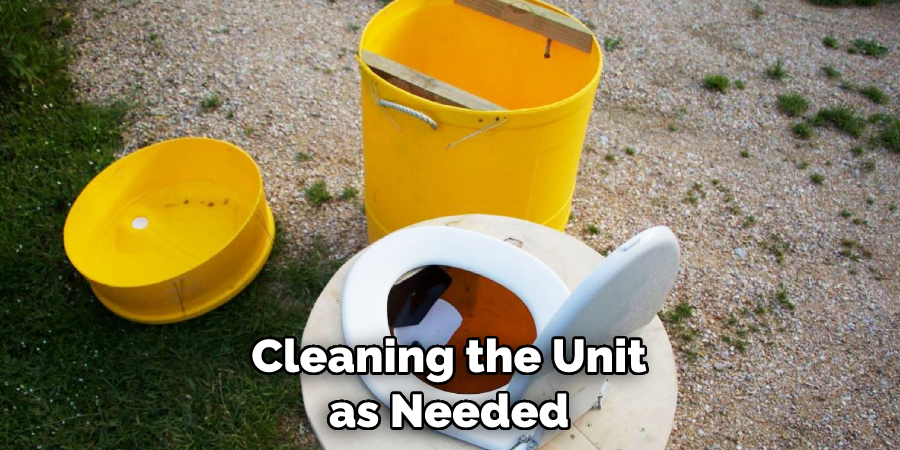We all know how important it is to conserve water. With water becoming an increasingly scarce resource, looking for ways to save it is essential. One way that has been gaining popularity is the waterless toilet. While it may sound bizarre or uncomfortable, the idea is intriguing, and the results are definitely worth it!

The waterless toilet is becoming an eco-friendly alternative to traditional toilets that use gallons of water a day. In this blog post, we will share with you all about how do waterless toilets work and how they can help you conserve water.
Why It’s Important to Learn how Do Waterless Toilets Work?
There’s a growing need for sustainable practices in today’s society, and water conservation is a crucial aspect of that. That’s where waterless toilets come in, and understanding how they work is important for all of us. Instead of relying on flushing with gallons of water, these innovative toilets use unique methods to transform waste into compost, which can then be used as fertilizer.
This preservation of water resources promotes sustainable living and contributes to the environment’s preservation. By learning how waterless toilets function, we can willfully contribute to reducing our carbon footprint and saving money on water bills in the long run.
What Is the Difference Between a Regular Toilet and A Waterless Toilet?
When it comes to bathroom fixtures, the humble toilet is a true unsung hero. But not all toilets are created equal. While a regular flush toilet uses gallons of water to carry waste away, a waterless toilet is designed to operate without any water whatsoever.
Using innovative technologies like evaporation, dehydration, and composting, these modern marvels are a more eco-friendly and sustainable option for homes and businesses alike. But how do they work, and what are the benefits of making the switch? Let’s explore the difference between a regular toilet and a waterless one to find out.
How Do Waterless Toilets Save Water?
Water is a precious resource that has become increasingly scarce in many parts of the world. With traditional toilets, each flush uses an average of 1.6 gallons of water, which adds up to a significant amount over time. This is where waterless toilets come in. These innovative devices use composting or dehydration to break down waste and eliminate the need for flushing altogether.

They save vast amounts of water and are also more environmentally friendly, as the composted waste can be used as fertilizer. While some people may be hesitant to use a waterless toilet, they are becoming more and more common in homes, schools, and businesses as people recognize the importance of preserving our planet’s finite resources.
How to Use Waterless Toilets – in 6 Easy Steps
Step 1. Find the Right Location
The location is one of the most important things to consider when installing a waterless toilet. The toilet should be placed in an area that is at least 10 feet away from any water source, such as a well or a spring. Additionally, the toilet should be placed on a level surface to ensure proper drainage.
Step 2. Install the Toilet
Once you have found the perfect location for your waterless toilet, it is time to install it. Most waterless toilets come with easy-to-follow instructions that will walk you through the installation process step-by-step. However, if you are having trouble installing the toilet, you can always hire a professional to do it for you.
Step 3. Connect the Vent Pipe
After the toilet is installed, you will need to connect a vent pipe to it. The vent pipe helps to remove any odors that the toilet may produce. The pipe should be connected to an existing vent stack or chimney. If you do not have an existing vent stack or chimney, you can hire a professional to install one for you.
Step 4. Use Biodegradable Waste Bags
One of the most important things to remember when using a waterless toilet is to use biodegradable waste bags. These bags are designed to decompose quickly, so they will not pollute the environment. Be sure to place one bag in the toilet before each use and dispose of them properly after each use.
Step 5. Add Water as Needed
Another important thing to remember when using a waterless toilet is that you will need to add water to it as needed. Most toilets come with a reservoir that needs to be filled with water every few days. Be sure to check your owner’s manual for specific instructions on how often you need to add water to your particular model of toilet.
Step 6. Pump Out Waste Regularly
Finally, be sure to pump out waste regularly from your waterless toilet. Depending on how often the toilet is used, you may need to pump out waste every few weeks or every few months. Again, be sure to check your owner’s manual for specific instructions on how often you need to pump out your particular model of toilet.

With these simple steps, you can easily use a waterless toilet and help conserve precious water resources. Now that you know how do waterless toilets work, you can start taking advantage of this efficient and eco-friendly option for your bathroom needs!
Are Waterless Toilets Better for The Environment?
Sustainability is a growing concern for many people, and it is no surprise that innovative solutions are being developed to address this issue. One of the topics that have been gaining traction in recent years is waterless toilets. They have been praised for their potential to reduce water consumption and decrease the amount of waste that ends up in landfills.
Unlike traditional toilets that use gallons of water to flush, waterless toilets use little to no water. This technology turns the waste into compost, which can be used as fertilizer for plants.
If you are someone who is looking to reduce their ecological footprint, switching to a waterless toilet may be an excellent option for you. Not only will it reduce water usage, but it will also contribute to a healthier and happier planet.
What Are the Benefits of Using a Waterless Toilet?
Waterless toilets offer an innovative and eco-friendly solution to traditional sanitation methods. By using little to no water, these toilets are an environmentally sustainable option that can substantially reduce water usage and waste.
Additionally, they are typically much more cost-effective compared to traditional toilets, making them a great investment for businesses, homes, and rural areas. Another added benefit is that they require less maintenance and repairs, which saves time and resources in the long run.
Overall, waterless toilets provide a practical and sustainable solution to traditional sanitation methods, making them a great option for those who prioritize efficiency and sustainability.

Are There Any Health Risks Associated with Waterless Toilets?
Waterless toilets have emerged as a popular sustainable alternative in recent years – and for good reason. They significantly reduce water consumption and, in turn, environmental impact. While they may sound like a win-win, some may wonder if any health risks are associated with using them.
The answer is yes, there is potential for harmful pathogens to develop if the toilet is not properly maintained and regularly emptied. However, with proper upkeep and appropriate usage, the risk of any health concerns is minimal. Ultimately, the decision to use a waterless toilet comes down to personal preference and balancing environmental concerns with practicality.
Is There Any Smell Associated with Waterless Toilets?
Waterless toilets are a popular alternative to traditional plumbing systems that require water. Despite their eco-friendly benefits and overall practicality, many people still wonder if there is an unpleasant odor associated with this type of toilet. The answer? Yes and no.
Rest assured, modern waterless toilets are designed to suppress any bad smells with the help of ventilation systems and specially formulated sealants.
However, if these systems are not properly installed or maintained, there may be an issue with odor. In general, the smell should not be a significant drawback to using a waterless toilet, but it is important to take the necessary measures to ensure that it stays that way.
What Type of Maintenance Is Required for Waterless Toilets?
Waterless toilets have gained popularity over the years due to their ability to conserve water and minimize environmental impact. But the question remains, what type of maintenance do they require? Unlike traditional flush toilets, waterless toilets don’t require a constant water supply to function. However, regular maintenance is still necessary to ensure they function effectively and are odorless.
This includes emptying the composting chamber (where waste is broken down), cleaning the unit as needed, and adding composting material to aid in the decomposition process. By keeping up with these simple maintenance tasks, waterless toilets can continue offering an eco-friendly and convenient solution for years.

Conclusion
Waterless toilets are an eco-friendly and water-saving alternative to traditional toilets. They rely on natural processes to break down waste and produce an organic fertilizer. While they may require proper maintenance and installation, waterless toilets offer several advantages, such as low water consumption, safety, and comfort.
Consider using waterless toilets in your home or outdoor space to conserve water and contribute to a sustainable future. Thanks for reading our post about how do waterless toilets work.